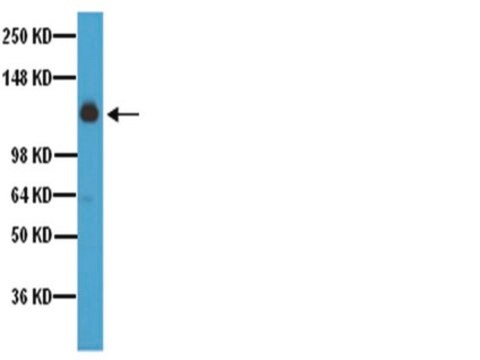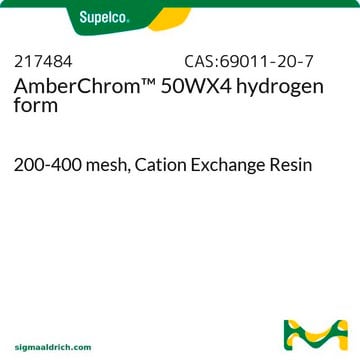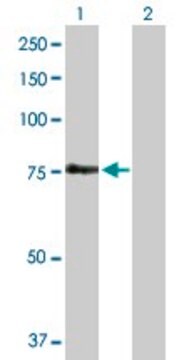AB1926
Anti-Integrin beta 5 (ITGB5) Antibody
CHEMICON®, rabbit polyclonal
Sinônimo(s):
Anti-Anti-AA475909, Anti-Anti-AI874634, Anti-Anti-ESTM23, Anti-Anti-[b]-5, Anti-Anti-[b]5, Anti-Anti-[b]5A, Anti-Anti-[b]5B, Anti-Anti-beta-5, Anti-Anti-beta5
About This Item
Produtos recomendados
Nome do produto
Anti-Integrin β5 Antibody, CT/cytosolic, serum, Chemicon®
fonte biológica
rabbit
Nível de qualidade
forma do anticorpo
serum
tipo de produto de anticorpo
primary antibodies
clone
polyclonal
reatividade de espécies
mouse, hamster, human, rat
fabricante/nome comercial
Chemicon®
técnica(s)
ELISA: suitable
immunofluorescence: suitable
immunohistochemistry: suitable (paraffin)
immunoprecipitation (IP): suitable
radioimmunoassay: suitable
western blot: suitable
nº de adesão NCBI
nº de adesão UniProt
Condições de expedição
dry ice
modificação pós-traducional do alvo
unmodified
Informações sobre genes
human ... ITGB5(3693)
mouse ... Itgb5(16419)
rat ... Itgb5(257645)
Descrição geral
The beta5 subunit associates with alphaV forming a receptor for vitronectin. This complex is expressed in a wide range of cell types including fibroblast and keratinocytes. It is also expressed at high levels in several tumors including lung, pancreatic and mammary carcinomas. It is not expressed in lymphblastoid cells.
Especificidade
Imunogênio
Aplicação
Immunoprecipitation: 5μL of antibody is sufficient to precipitate alphaVbeta5 from
2.5x10E6 cells.
Western blot: non-reduced conditions; do not use milk in the dilution buffer.
Immunofluorescence: 1:100.
Immunohistochemistry (Acetone Fixed) 1:40-1:80
Immunohistochemistry (Paraffin Embedded) 1:200 (ABC)
Optimal working dilutions must be determined by end user.
Descrição-alvo
forma física
Outras notas
Informações legais
Não está encontrando o produto certo?
Experimente o nosso Ferramenta de seleção de produtos.
Código de classe de armazenamento
10 - Combustible liquids
Classe de risco de água (WGK)
WGK 1
Certificados de análise (COA)
Busque Certificados de análise (COA) digitando o Número do Lote do produto. Os números de lote e remessa podem ser encontrados no rótulo de um produto após a palavra “Lot” ou “Batch”.
Já possui este produto?
Encontre a documentação dos produtos que você adquiriu recentemente na biblioteca de documentos.
Active Filters
Nossa equipe de cientistas tem experiência em todas as áreas de pesquisa, incluindo Life Sciences, ciência de materiais, síntese química, cromatografia, química analítica e muitas outras.
Entre em contato com a assistência técnica








